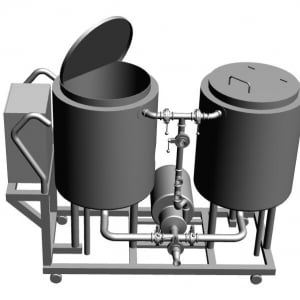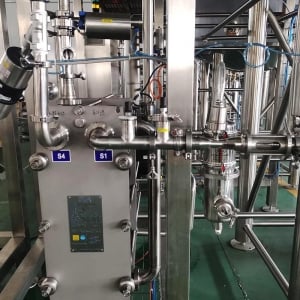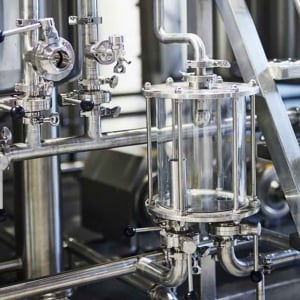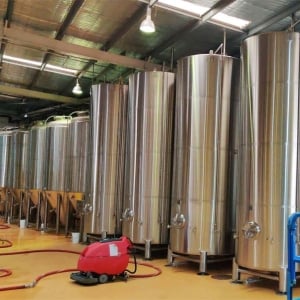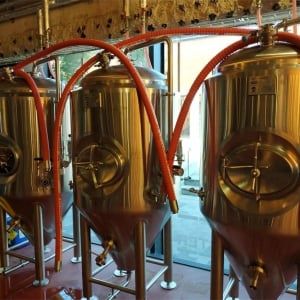Kombucha Brewing Equipment
Kombucha Brewing Equipment: A Comprehensive Guide to Crafting the Perfect Brew
Brewing kombucha at home or on a commercial scale can be an incredibly rewarding experience. But to get started, you’ll need the right equipment. Whether you’re a hobbyist looking to experiment with small batches or an entrepreneur setting up a large-scale operation, understanding kombucha brewing equipment is essential for a successful brew. In this guide, we’ll cover everything from the basic equipment needed for home brewing to the advanced systems used in commercial production. We’ll also dive into the brewing process, equipment customization, and how to choose the right suppliers.
Overview of Kombucha Brewing Equipment
Kombucha brewing involves a delicate balance of art and science. The equipment you choose plays a crucial role in maintaining this balance, influencing everything from the flavor profile to the efficiency of your brewing process. Whether you’re just starting out or looking to upgrade your setup, this guide will walk you through the essential tools and advanced systems required to brew kombucha.
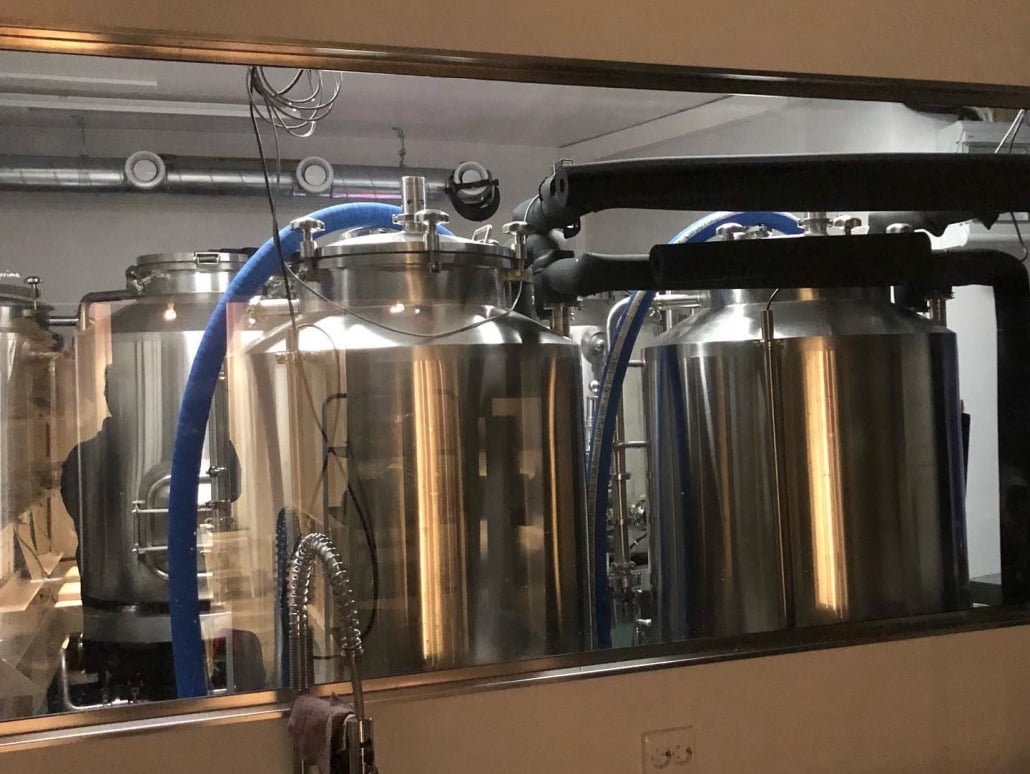
Basic Kombucha Brewing Equipment for Home Brewers
For those just beginning their kombucha journey, starting with the basics is key. You don’t need to break the bank to brew a tasty batch of kombucha at home. Here’s a breakdown of the essential equipment:
- Glass Brewing Jar: The heart of your kombucha brewing setup. Glass is preferred because it doesn’t react with the acidic nature of kombucha. Typically, a one-gallon jar is ideal for home brewers.
- Breathable Cloth Cover: Kombucha needs to breathe during fermentation, so a breathable cloth (like cheesecloth) and a rubber band are necessary to cover your jar, keeping dust and pests out while allowing air to circulate.
- pH Strips or Meter: Monitoring the pH level is crucial to ensure that your kombucha is fermenting properly and remains safe to drink. A pH range of 2.5 to 3.5 is typically ideal.
- Stainless Steel or Plastic Funnel: For transferring your brew into bottles, a funnel made of non-reactive material is essential.
- Bottles with Airtight Caps: Once your kombucha is ready, you’ll need bottles for storing and carbonating it. Swing-top bottles are popular for this purpose because they maintain a good seal, essential for carbonation.
- Heat Mat: If you’re brewing in a cold environment, a heat mat can help maintain the ideal fermentation temperature (around 75°F to 85°F).
Advanced Equipment for Commercial Kombucha Brewing
As you scale up your kombucha brewing operations, your equipment needs will become more sophisticated. Here’s what you’ll need for commercial brewing:
- Stainless Steel Brewing Vessels: Unlike glass jars, commercial brewers often use large stainless steel tanks for brewing. These vessels are durable, easy to clean, and can hold large volumes of kombucha.
- Automated pH and Temperature Controllers: Consistency is key in commercial brewing. Automated systems that monitor and adjust pH and temperature ensure that each batch of kombucha meets your exact standards.
- Kegging System: For businesses that distribute kombucha on tap, a kegging system is essential. This includes kegs, carbonation systems, and dispensing taps.
- Commercial Bottling Line: For bottling at scale, an automated bottling line is crucial. It speeds up the process and ensures consistent filling and sealing of each bottle.
- Filtration System: To extend the shelf life of commercial kombucha, filtration systems are used to remove yeast and other particulates from the final product.
Types of Kombucha Brewing Equipment
Here’s a detailed look at the different types of kombucha brewing equipment, presented in a table for easy comparison:
| Equipment Type | Material | Use Case | Advantages | Disadvantages |
|---|---|---|---|---|
| Brewing Jars | Glass | Home Brewing | Non-reactive, easy to clean | Limited capacity, fragile |
| Brewing Vessels | Stainless Steel | Commercial Brewing | Durable, scalable, easy to clean | Expensive, requires more space |
| Bottles | Glass, Plastic | Storage & Carbonation | Reusable, good seal | Glass can be fragile, plastic may leach |
| pH Meters | Digital, Strips | Monitoring pH | Accurate, easy to use | Digital meters require calibration |
| Heat Mats | Electric | Temperature Control | Maintains consistent temperature | Energy cost, limited heating area |
| Kegging Systems | Stainless Steel | Dispensing on Tap | Scalable, efficient | High initial cost, requires maintenance |
The Brewing Process: From Start to Finish
Brewing kombucha is a process that requires attention to detail and the right equipment at every step. Here’s how the process typically unfolds:
1. Preparing the Tea Base
The journey of kombucha begins with a tea base, usually made from black or green tea. The tea is brewed, sweetened with sugar, and then cooled. This sweet tea serves as the food source for the SCOBY (Symbiotic Culture of Bacteria and Yeast).
2. Fermentation
The cooled tea is poured into your brewing jar or vessel, and the SCOBY is added. The fermentation process begins as the SCOBY consumes the sugar, producing alcohol, carbon dioxide, and various acids that give kombucha its distinctive tangy flavor. Depending on the ambient temperature and the desired flavor profile, fermentation can take anywhere from 7 to 21 days.
3. Flavoring and Bottling
After the initial fermentation, the kombucha can be flavored with fruits, herbs, or spices. This is where creativity comes into play! Once flavored, the kombucha is bottled in airtight containers, where it undergoes a secondary fermentation, building carbonation.
4. Carbonation and Storage
During the secondary fermentation, the kombucha becomes fizzy. It’s then stored in a cool place, like a refrigerator, to halt fermentation and preserve the flavor.
Capacity, Space, Design, and Customization of Kombucha Brewing Equipment
When choosing equipment, especially for commercial brewing, it’s essential to consider factors like capacity, space, design, and customization options. Here’s a table that breaks down these considerations:
| Factor | Home Brewing | Commercial Brewing |
|---|---|---|
| Capacity | 1-2 gallons per batch | 50-500 gallons per batch |
| Space | Requires minimal space (kitchen counter) | Requires dedicated brewing space (brewery) |
| Design | Simple, compact, aesthetic options available | Industrial, functional, customizable for branding |
| Customization | Limited to jar size and bottle type | Custom vessels, branding, automated systems |
Suppliers and Price Range for Kombucha Brewing Equipment
Choosing the right supplier is crucial, especially for commercial brewers who need reliable, high-quality equipment. Here’s a look at some popular suppliers and the price ranges for various types of kombucha brewing equipment:
| Supplier | Equipment Type | Price Range |
|---|---|---|
| Kombucha Kamp | Home Brewing Kits | $50 – $150 |
| BrewCraft USA | Commercial Brewing Vessels | $500 – $5,000 |
| Spike Brewing | Stainless Steel Fermenters | $1,000 – $10,000 |
| Ss Brewtech | Kegging Systems | $500 – $3,000 |
| Amazon | Bottles and Accessories | $20 – $100 per set |
| MoreBeer! | pH Meters and Testing Kits | $10 – $200 |
Installation, Operation, and Maintenance of Kombucha Brewing Equipment
Proper installation, operation, and maintenance of your equipment are critical to ensuring a smooth brewing process. Below is a table detailing these aspects:
| Aspect | Home Brewing | Commercial Brewing |
|---|---|---|
| Installation | Simple setup, no professional help needed | Requires professional installation, especially for large systems |
| Operation | Manual operation, simple controls | Automated systems, requires training |
| Maintenance | Regular cleaning of jars and bottles | Regular cleaning, system checks, part replacements |
How to Choose a Kombucha Brewing Equipment Supplier
Selecting the right supplier can be daunting, especially with so many options available. Here’s a guide to help you make the right choice:
| Criteria | Details |
|---|---|
| Reputation | Look for suppliers with positive reviews and a strong reputation in the industry. |
| Product Quality | Ensure the equipment is made from high-quality materials like stainless steel or food-grade plastic. |
| Customer Support | Opt for suppliers who offer excellent customer support, including installation assistance and maintenance services. |
| Customization | If you’re scaling up, consider suppliers who offer customization options for branding and functionality. |
| Price | Compare prices, but don’t compromise on quality. A higher upfront cost can save money in the long run. |
| Warranty and Return Policy | Choose suppliers that offer good warranty terms and flexible return policies. | |
Advantages and Limitations of Different Kombucha Brewing Equipment
Each type of kombucha brewing equipment has its own set of advantages and limitations. Understanding these can help you make an informed decision. Here’s a comparative table:
| Equipment | Advantages | Limitations |
|---|---|---|
| Glass Jars | Affordable, easy to clean, non-reactive | Fragile, limited capacity |
| Stainless Steel Vessels | Durable, scalable, maintains consistent temperature | Expensive, heavy, requires more space |
| pH Meters | Accurate, easy to use | Requires calibration, can be expensive |
| Heat Mats | Maintains consistent temperature, easy to use | Energy consumption, limited to small brewing areas |
| Kegging Systems | Ideal for commercial distribution, scalable | High initial cost, requires regular maintenance |
| Commercial Bottling Lines | Efficient, speeds up the process | Expensive, complex installation and operation |
Operating Kombucha Brewing Equipment
Operating kombucha brewing equipment involves understanding the brewing process, maintaining cleanliness, and troubleshooting common issues. Here’s what you need to know:
- Sanitization: Before starting a brew, it’s crucial to sanitize all equipment to prevent contamination. This includes brewing jars, vessels, bottles, and any utensils used during the process.
- Monitoring Fermentation: Regularly check the pH and taste of your kombucha during fermentation. This helps in determining the right time to bottle.
- Temperature Control: Keep your brewing area at a stable temperature, ideally between 75°F and 85°F, to ensure proper fermentation.
- Secondary Fermentation: After bottling, allow your kombucha to undergo a secondary fermentation in airtight bottles to build carbonation.
Comparing Pros and Cons of Kombucha Brewing Equipment
When choosing equipment, it’s essential to weigh the pros and cons. Here’s a comparative analysis:
| Aspect | Home Brewing | Commercial Brewing |
|---|---|---|
| Initial Investment | Low, affordable | High, significant upfront costs |
| Ease of Use | Simple, user-friendly | Complex, requires training |
| Customization | Limited | Extensive customization options |
| Scalability | Not scalable beyond small batches | Highly scalable |
| Maintenance | Low-maintenance | Requires regular, professional maintenance |
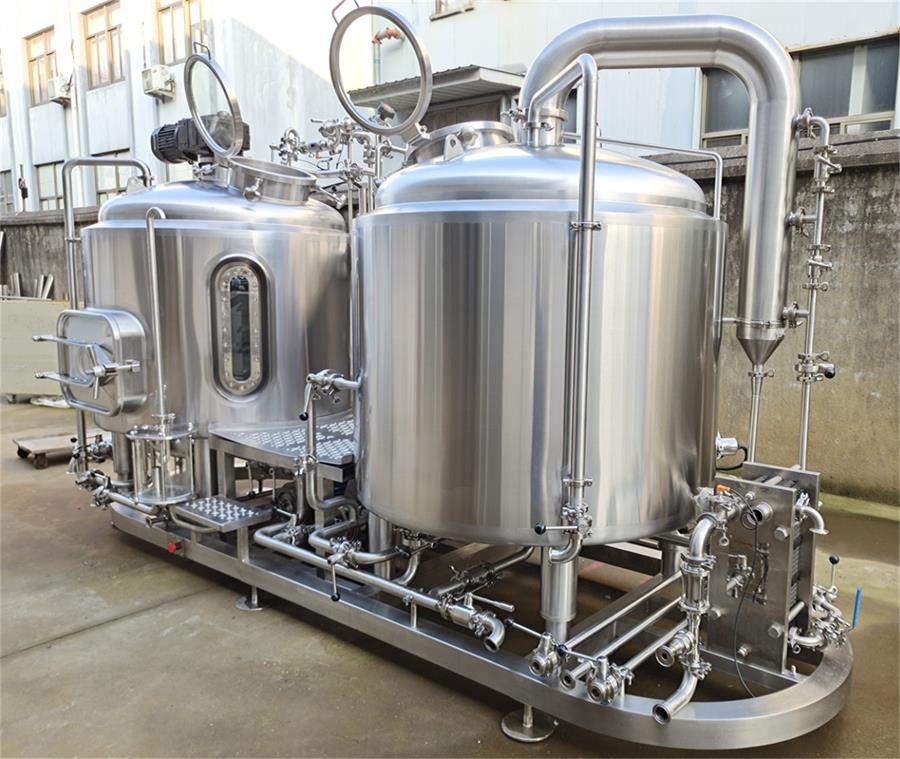
FAQ
What equipment do I need to start brewing kombucha at home?
For home brewing, you’ll need a glass jar, a breathable cloth cover, pH strips, a stainless steel funnel, bottles with airtight caps, and a heat mat if your brewing environment is cold.
How much does commercial kombucha brewing equipment cost?
The cost varies widely depending on the scale and complexity of your setup. Basic commercial brewing systems start at around $1,000, while more advanced setups can exceed $10,000.
Can I use plastic containers for brewing kombucha?
It’s not recommended to use plastic containers for brewing kombucha because they can leach chemicals into the brew and are prone to scratching, which can harbor bacteria.
How do I clean and maintain my brewing equipment?
Clean your equipment with warm water and mild soap. Avoid using harsh chemicals. Regularly check and replace any worn-out parts to ensure your brewing process remains hygienic.
Is it worth investing in a kegging system for kombucha?
If you’re brewing kombucha on a commercial scale or want to distribute it on tap, a kegging system is a worthwhile investment. It streamlines the carbonation and dispensing process, making it easier to manage large volumes.
Conclusion
Brewing kombucha is an exciting journey, whether you’re making small batches at home or scaling up to a commercial operation. The right equipment is crucial to ensuring that each batch is delicious and safe to drink. By understanding the different types of equipment, their advantages and limitations, and how to maintain them, you can set yourself up for success in the world of kombucha brewing.






